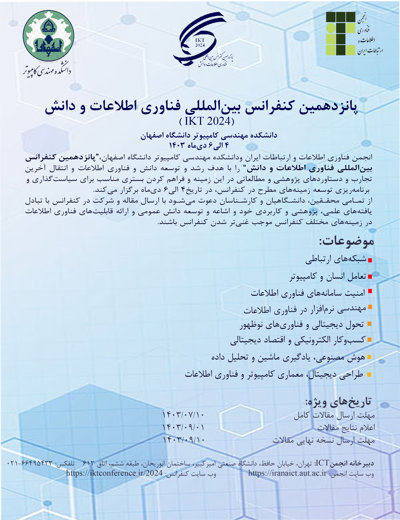0% Complete

نویسندگان :
کلمات کلیدی :
چکیده :
لیست مقالات بایگانی شده
حنانه رجبیون - محمد قاسم زاده - وحید رنجبر بافقی
مژگان نوروزی نژاد - دکتر زهرا موحدی مژگان نوروزی نژاد - زهرا موحدی -
Farsad Zamani Boroujeni - Doryaneh Hossein Afshari - Fatemeh Mahmoodi
Mohammad Hassan Heydari - Arshia Hemmat - Erfan Naman - Afsaneh Fatemi
Dr Hadi Shakibian - Setareh Mokhtari
Marzieh Sedighi - Mehdi Hamidkhani - Mostafa Sadeghi
فاطمه چیت ساز - سامان هراتی زاده
Arian Baymani - Maryam Naderi Soorki
عفت تقی زاده بیلندی - آرش دلداری - علیرضا صالحان
مهدی موسی وند - دکتر پیام محمودی نصر مهدی موسی وند - پیام محمودی نصر -




